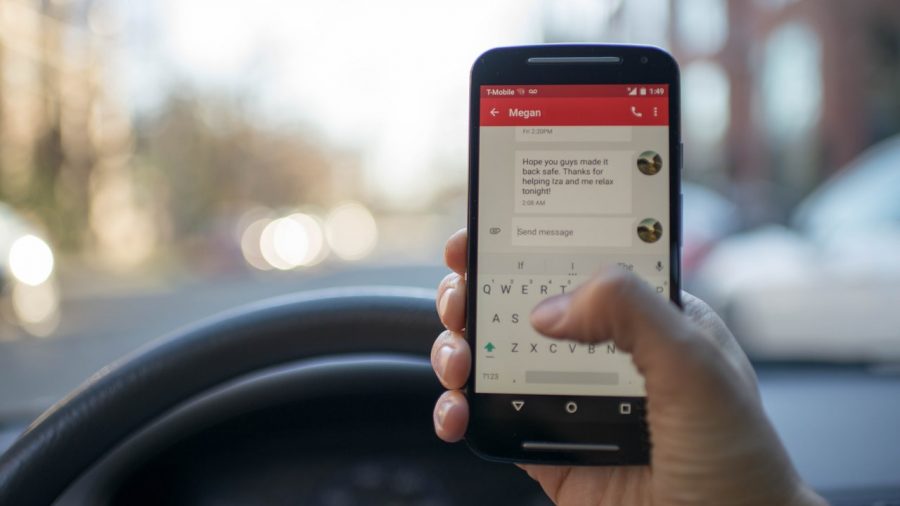Have you ever felt anxious when you heard a phone alert while driving? Do you have a fear of missing out (FOMO)? Do you agree it’s dangerous for others to use their phones while driving but you can do it safely? You’re in good company. Nearly 19% of drivers are on the phone while on the road.
Phones are us
Phones are so integrated with daily life, it would be hard to live without them. Australians glance at a phone about 560 million times a day, according to Deloitte. Within 5 minutes of waking up, a third have checked their phones and another 70% do it during social meals.
It’s no surprise Zendrive (US) claims one in every 12 drivers is a phone addict. Addicts:
- Spend 3 times longer actively on the phone while driving
- Ignore the road 28% of the time while driving
- Are on the road 1.5 times more than the average.
Phone addicts are considered to be as dangerous behind the wheel as drunks. This is because phones are highly distracting when driving already takes so much concentration and brain power. Driving is actually a type of multitasking and using phones adds a further task on top.
Who are the people most likely to be on the phone while driving?
Phones and gender
Researchers worldwide use the Mobile Phone Problem Use Scale (MPPUS), rather than addiction factors, to spot “problematic use” of phones. Women, more than men, claim their use of phones is problematic. They are more likely to use their phones for social reasons while men use them for business and experience less “social stress”. But gender was not a predictor of problematic use in this Australian study.
Age was a predictor: people 18-24 reported the highest problematic use and people over 60 the lowest. In fact, MPPUS scores in Australia rose from 2005 to 2018 among young people and those aged 46 or more.
Another predictor was education: people who went to university reported higher MPPUS scores. It seems counterintuitive that more educated people would phone and drive, but it may be their lifestyles just involve more driving.
It’s an addiction
Not everyone agrees problematic phone use is an addiction. This is because genuine addictions have severe effects on psychological and physical health and addicts need more of the substance to feel the same effect.
Problematic phone use looks like an addiction, because of excessive use, trouble with controlling impulses, and high-risk behaviour like texting and driving. Many users feel lost without their phones and may even experience withdrawal symptoms. It may just be part of digital addiction, which can promote obesity, anxiety, sleeplessness, lower productivity, and make it difficult to have relationships.
Overusing phones has also been called Busy Brain Syndrome, which promotes all forms of distraction and erodes attention. It includes FOMO and “technoference” (constant digital interruptions). For some people, being on the phone is a coping strategy, because they would rather do that than do something else.
Whatever you choose to call it, the problem is not going away and it is poisonous for road safety.
Interventions
Interventions to reduce problematic phone use can be imposed by authorities or initiated by the individual. It is debatable how successful these can be unless they address the underlying problem.
Government efforts to reduce phone use while driving do not appear to be successful. The latest approach in NSW, announced late September 2019, is using world-first phone detection cameras to spot people using their phones while driving. Currently, Centre of Road Safety collects statistics on deaths or injuries caused by speeding, alcohol and fatigue. They will need to start collecting data on illegal phone use to know how successful this new intervention will be.
Parents act as role models for their children while driving. So parents who use their phones are letting their children know that is OK. Research shows illegal phone use is common while children are in the car.
Some people may have the discipline to put their phone on silent and out of reach. Yet UK research found only 15% of drivers put their phone in the glove department before setting off. Some drivers use their phones to stop them from using their phones, for example, “Do not disturb while driving”.
Researchers suggest there should be warnings on phone apps to let people know how much time they will spend on the phone, and how much this will typically cost.
These are all rational ideas but unlikely to gain much traction with the problematic user. It appears many people who don’t even consider themselves problematic users still use their phones while driving. Even if this is not an addiction, per se, phones are still addictive.


your opinion matters: